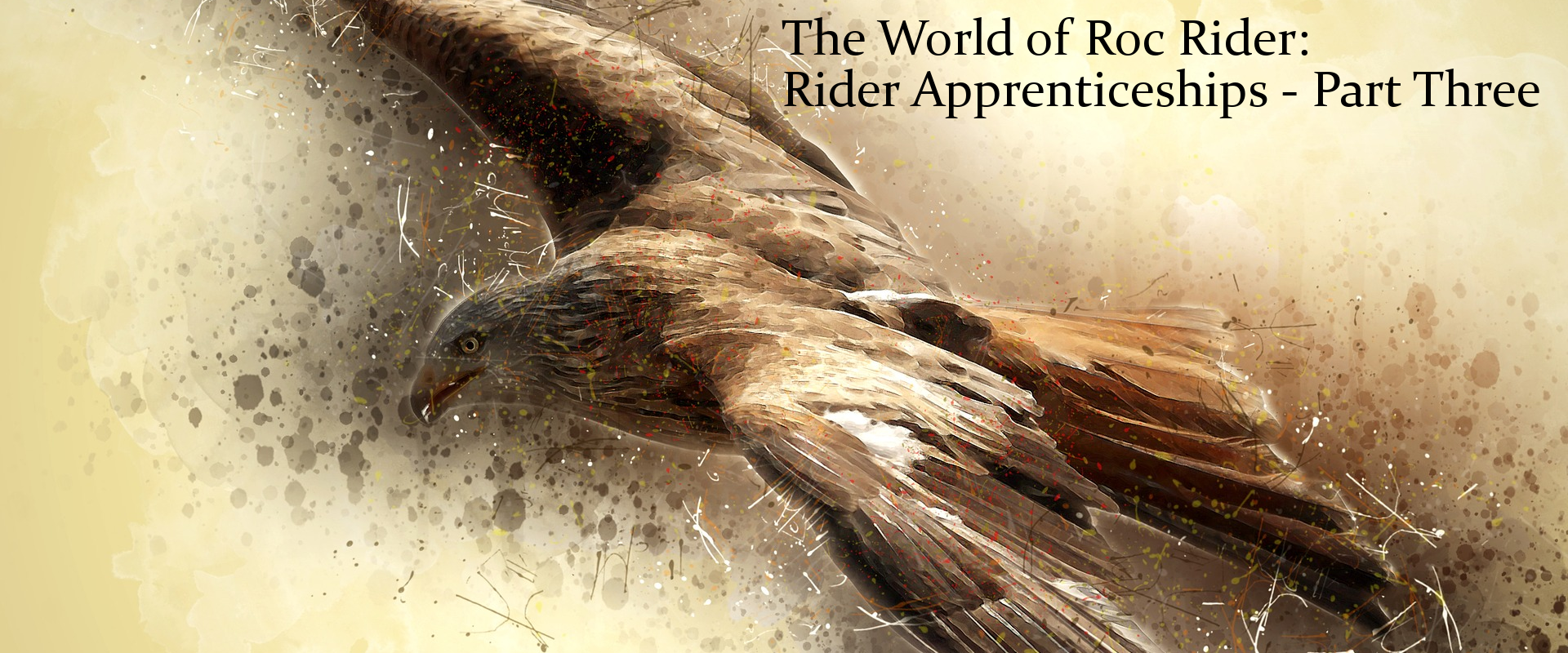In this final post on roc rider apprenticeships, we learn about how and when a roc rider finally takes to the sky for the first time. Read them here if you missed the first or second entries in this series.
Listening in Flight
Before a rider can even think of strapping themselves to a roc’s back, the bird must be taught to accept commands on the wing. This is more difficult than it might seem on the surface. Even a bird that has been well trained on the ground sometimes fails to heed its rider once it has the wind in its wings.
There are two steps to drilling this into a young roc. First is overcoming the physical barrier of the wind and distance that can prevent a bird from noticing a rider’s commands amid the other noise. Various methods for accomplishing this are used throughout the rider community. Some use a flight tether to keep the bird close to home and only allow them slack as they learn to heed commands. Harsher masters instruct their apprentices to withhold meals from the yearling until it heeds. A myriad of other techniques are used as well, but these are the most common.
Secondly, a roc must learn to trust that its rider will not give it commands that will harm them. The independence a young roc gains upon attaining flight comes with an unfortunate stubborn streak that the roc, and not its human companion, knows best. While establishing this particular trust is a less clear-cut process, consistent application of positive reinforcement training methods seems to be the most effective.
Accepting Weight
While rocs have the ability to carry things in flight, it is not their natural inclination to do so. As an apex predator, the roc’s instinct is to simply feed on the ground after a kill, trusting that its imposing presence will keep all but the hungriest, most determined of rivals away. Bearing weight is not something the roc does without guidance.
Long before being fitted for a harness, a yearling is taught to lift and transport objects in their talons. While carrying weight is different from bearing it on the back, the process helps get them to learn to adjust their flight to additional weight that is not their own.
In a normal training regimen, the roc will eventually transition to bearing progressively larger weight in an empty harness.
First Flight
Regardless of training, the day eventually arrives when the young rider must throw caution to the wind and mount up. Trust in one’s roc becomes the most important thing when the day finally arrives.
No one ever knows for sure how a roc will react to being ridden for the first time. Even the best-trained animals sometimes panic. A well-taught apprentice is prepared for such an occurrence and knows how to calm their mount by appealing to established trust.
When the flight is achieved a celebration ensues. With this flight an apprentice graduates to officially become a roc rider in their own right.
The most significant event of a roc rider’s life is the day when their animal spreads his or her wings and lifts into the sky, rider firmly strapped in. For most, the anniversary of this first flight is a sacred day. Even as mounts pass away or retire and new first flights are taken, this moment is celebrated.
And that takes us through all the significant moments of a roc rider apprenticeship. I hope you’ve found this interesting. If you have any questions feel free to comment or use the contact form. I’ll be happy to clear things up :).


